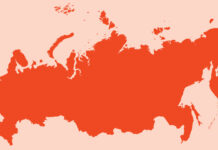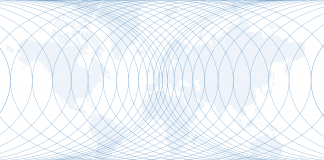As we consider the American claim that Russia intends to attack Ukraine – which the Kremlin denies – it is useful to consider in skeletal form the phases of warfare in order to understand not only the sequence but also the difficulty and risks of war.
There are four phases in attacking and occupying a country:
Phase 1: Intelligence. Understand who you are fighting, his intentions and capabilities, and what war is meant to achieve.
Phase 2: War. Initiate movement and firepower intended to break the enemy’s will and ability to resist.
Phase 3: Occupation. Occupy the country, or that portion that is necessary to achieve the political end desired.
Phase 4: Pacification. Pacify the occupied terrain and break the will of the people to resist.
This is an orderly summary of what is likely the most disorderly thing humans experience. Each stage is more complex and disorderly than might seem possible, and the number of stages can boggle the mind. Nonetheless, simplifying and ordering the chaos of war will help us pose the proper questions and perhaps glimpse the answers.
Intelligence is the first phase, and it precedes the decision to fight. Understanding the intentions of a potential enemy tells you whether what he intends is compatible with your interests. Understanding his capabilities tells you whether you should take the enormous risk of going to war. Intentions and capabilities are things that all countries seek to understand about even the least likely adversary. They tell you who you have to fight and who might fight with you. Intelligence can also guide you on who the enemy might be. When Japan invaded China, it did not anticipate that in due course it might be facing the United States. If there is a Russian invasion of Ukraine, the U.S. has a fairly clear idea of who it might be fighting if it intervenes. (China is unlikely to have the capability to project decisive force during the timeframe of any U.S.-Russian conflict.) Russia does not know the order of battle facing it, although it might be clear on what kind of force a potential adversary could bring to bear. The political uncertainty creates military uncertainty.
The second phase is the initiation and prosecution of war. The aggressor decides for the defender. When Germany, allied with the Soviet Union, invaded Poland, Berlin’s intelligence did not tell it about the array of nations and long-run capabilities it would be facing. A decision to go to war is meant to anticipate the shape of the war in the end. Political intelligence is far more difficult to gather than military intelligence. The engines of war can be hidden only imperfectly. The intentions of countries are difficult to fathom, as even those countries are unaware of what they might do. Nevertheless, it is essential to evaluate what they will do when confronted with the war you are launching, either now or in the long run. You must know this in order to know the order of battle you will have to defeat. Hitler understood his potential enemies. He did not appreciate the order of battle the United States would bring to bear or the resilience of the Soviet defense. Whatever Russia’s objective in Ukraine, its uncertainty about who its enemy might be is a deterrent. This is true unless Russian intelligence has deeply penetrated American decision-making.
The third phase is the occupation of the territory or country targeted. Occupation is an end. The means to this end must be the destruction of the enemy’s military, physically or as a matter of morale. France had the material ability to continue resisting Nazi Germany but lacked the morale. The occupation of a country is a difficult and time-consuming process even when there is no resistance. There is first the sheer physical size of the country and the caution that must accompany imperfect intelligence about the enemy force. Then there is the matter of logistics. Soldiers must eat, and in modern warfare, gasoline must be delivered to vehicles, along with ammunition to replace what was consumed. In an armored assault, such as would be the case in Ukraine, armored vehicles, even when well maintained, have a tendency to break down. When 50 tons of moving parts encounter the road, parts may fail. And we should not underestimate the anti-tank weapons given to Ukraine. Any assault would have to be methodical and aware of possible threats, and the logistic movement itself is more vulnerable than the main thrust and just as essential. If the occupation faces resistance, movement will be slowed dramatically. If not, concern about the possibility of resistance will slow the movement. This has political ramifications, as a rapid defeat of a force precludes reinforcement by foreign powers – they would have to invade anew. An extended process of occupation increases the likelihood of foreign powers feeling pressure to intervene on behalf of the defenders – or at least the offensive force has to consider the possibility.
The fourth phase may be the most time-consuming and politically vexing. Some occupied populations accept defeat. Others do not. The best example of the military effectiveness of post-occupation resistance is Russia itself, where military and civilian forces continued resisting behind the advancing Germans, forcing the Germans to divert forces to pacification, which further alienated the population and increased resistance behind the front line. Britain in India faced this problem in the 19th century. Pacification is a political issue pivoting on the population’s loyalty to its government and the hostility of the occupiers. From the occupiers’ point of view, pacification is a double-edged sword, both limiting resistance and encouraging it through its brutal nature. It is, of course, not clear how loyal the Ukrainian people are to the government or the principle of an independent Ukraine, nor is it clear how much they dislike the Russians and how much a Russian pacification might encourage resistance.
In the case of Russia and Ukraine, the Russians cannot be certain whether the U.S. would become involved or what weapons they would use. In modern warfare it is not necessary to come within a kilometer of a tank to destroy it. Long-range missiles can attack the force and, more profitably, the logistical system that supports that force. A U.S. intervention would be the most dangerous for Russia, and Moscow can’t trust whatever Washington says, particularly if Ukrainian resistance is stiff, casualties are high and the U.S. finds itself under pressure to intervene. It is a case where the Americans themselves don’t know what they will do. In that case, what the Russians intended to be a short war could drag out, with the likelihood of successful pacification uncertain.
Military operations require the minimization of uncertainty. It is, however, in the nature of war that uncertainties multiply. The U.S. dismissed the idea of a German counteroffensive late in World War II. The Battle of the Bulge resulted. The U.S. expected North Vietnam to abandon its desire to unite Vietnam. It miscalculated. And Stalin did not expect a German invasion in 1941.
Intelligence frequently fails. Military operations suffer failures of command, communication and morale. The resistance to the invader unexpectedly surges. Allies of the defender emerge as a surprise, with military and non-military attacks. Superb sources of information from the enemy’s capital turn out to be working for the enemy. To go to war, there must be an overriding interest for which no other solution or mitigation is possible.
When we use the stages of war as a skeleton on which to drape the various phases, war becomes an unattractive idea. For the Russians, who have not conducted an extended multidivisional war in nearly 75 years, the option might seem attractive. Time hides truths. But in the case of Russia, the truth of war will take centuries to forget. The Russians remember World War II in their bones. They also remember how many things Hitler miscalculated, from Russian resistance to the nations that supported Russia. And in remembering that war, considering the model I tinkered with here and the vast unknowns, the Russians, I don’t think, will initiate another. It would make little sense.







